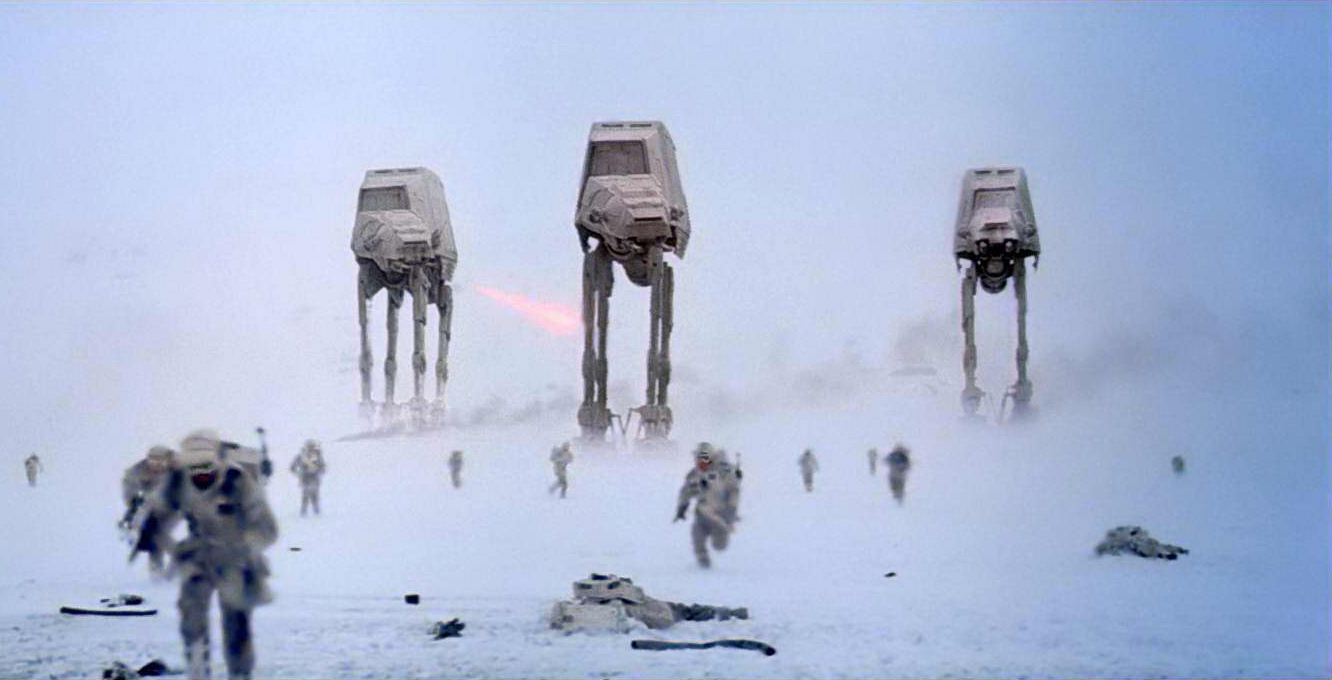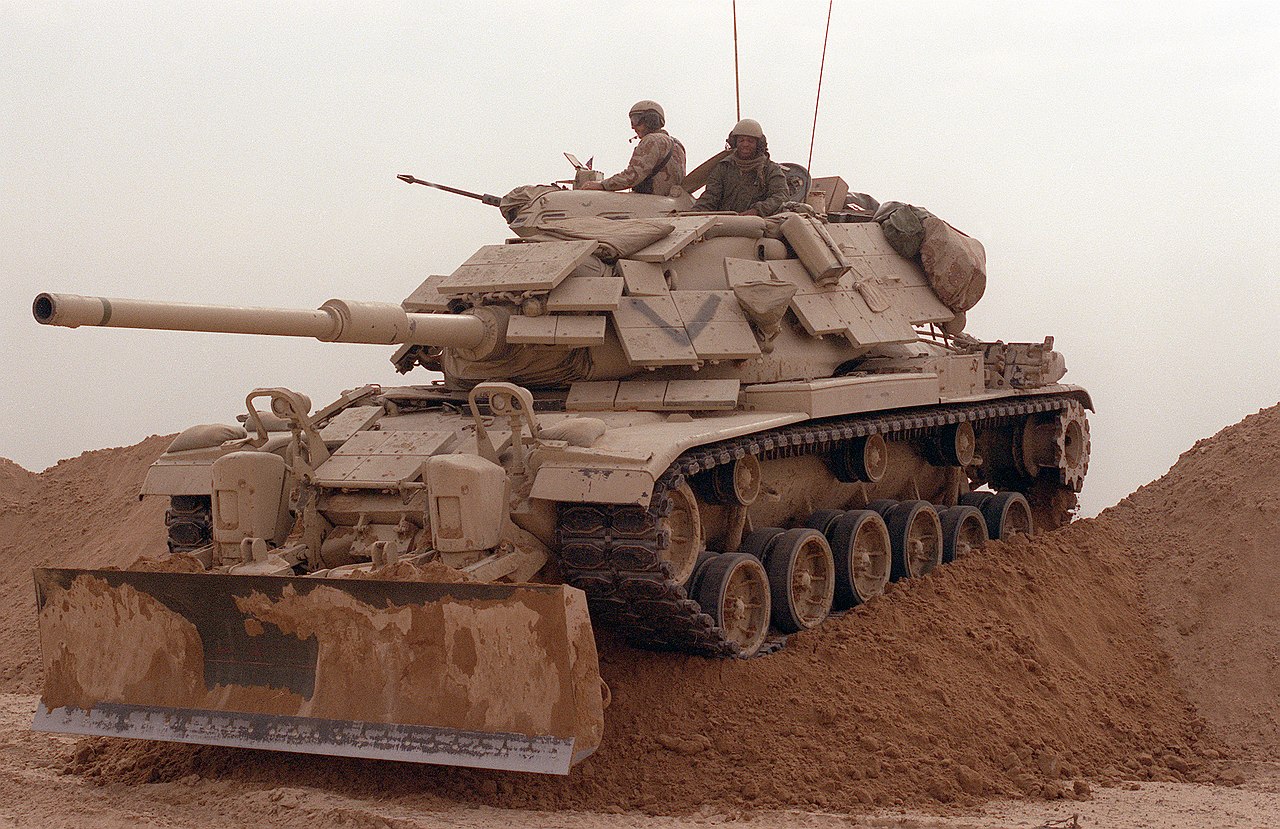Overview
In the Star Wars movies, both sides essentially typify the combating theories present in Biddle's work. The Empire follows the Old Theory models, as it has an incredible numerical preponderance over any conceivable adversary, and enjoys an enormous technological edge. It also has an enormous air force and a moon-sized space station that can destroy planets, aptly named the "Death Star".
The Rebel extremists are outnumbered and technologically outlcassed. The ground troops use World War 1 style trenches and fixed emplacements (which get destroyed quickly):
Unsurprisingly, they rely quite heavily on their outnumbered air and space forces.
Why it relates to Biddle
The two sides here are easily analogous to Biddle's "Old Theories" and "New Theory." The "Old Theories" that relate to victory and defeat in battle tend to overemphasize the roles played by numeric preponderance and technological superiority. This ignores the dichotomy inherent in the "quality vs. quantity" argument, as there are tradeoffs that must be made in the procurement process. Just to make things interesting, the Empire figured out a way to solve the apparent inconsistencies between quality and quantity, with a "get both" solution; after all, a military craft the size of a Galilean moon would certainly require both inordinate amounts of manpower and technological prowess.
The "Old Theory"s reliance on technology and numerical preponderance to explain superiority in battle de-emphasizes the role of tactics and force employment on the tactical level, instead subscribing to the Dyadic Theory of technology (wherein the side with the better technology is better off and will likely win). This is most clearly seen during various ground battle sequences throughout the movies. In fact, the only real use of their ground technology involves lumbering slowly towards the enemy in a frontal assault using mechanized troops that have all the grace and maneuverability of elephants:
The "New Theory" places far more emphasis on the role of Force Employment--a theory to which the Rebels certainly seem to ascribe. The Rebels lost the winter battle of Hoth (pictured above), as they did not make use of Biddle's recommended defensive measures--hiding their defenses, using interlocking fields of fire, and defense in depth. They did at least subscribe to the concepts of cover and concealment, dispersion, small-unit independent maneuver, and
combined-arms integration--which would have been great if they were on the offensive. They did employ all of the above in their ground battle of the 3rd movie of the original trilogy (number 6, when fighting offensively on a forested moon around Endor), and won decisively.
The Air and Space forces of the two sides show an even larger imbalance than those on the ground, and showcase even more why force employment matters. As stated previously, the Empire has a space station the size of a small planet, that can blow up bigger planets. The Rebels have a relatively small space flotilla with a number of small fighters. The biggest thing the Rebels have that the Empire lacks is tactics and a thorough understanding of force employment. Despite all the wonders of technology and obvious intergalactic numerical preponderance, the Empire still left a direct port from the exterior straight to some style of nuclear-powered core--a defect around which the Rebels planned an entire offensive operation.
This is an oversight that the IAF would have loved during Operation Opera in 1981, when they bombed Iraq's nuclear reactor. In any event, the outcomes were the same:
Why does it matter?
The inevitable question. Why go through a science fiction movie to attempt to explain military power theories of the real world? Simple--an outgunned, out-manned force that is technologically outmatched can still fight and win if their underlying theories are correct. The most obvious set of examples of such occurrences come from any number of Arab/Israeli conflicts from the 20th century, and a number of delightful summaries can be found in Kenneth M. Pollack's book Arabs at War: Military Effectiveness, 1948-1991. Contained within the first 150 or so pages are a number of exposes regarding the performances of the Egyptian military in a number of wars against Israel during the latter half of the 20th century. In a number of the conflicts, the Egyptian military possessed a preponderance of then-modern Soviet equipment that was technologically superior to the motley assortment possessed by the Israelis. However, the Israelis consistently beat back their Egyptian foes, in fight of odds that would be thought suicidal to any "Old Theory" adherents.
How were the Israelis able to consistently claim victory? According to Biddle, any "New Theory" modern-system military will consistently come out victorious when faced up against a non-modern-system adversary, even if that adversary possesses the technological or numeric edge. This plays out in any number of wars the Israelis have fought against their admittedly underwhelming neighbors.
Famously, this lop-sided match between the modern system and non-modern system played out in Gulf War 1 and Gulf War 2, prompting many to speculate that it was the cusp of a revolution in military affairs. Biddle implies that the technological advancement demonstrated in the Gulf Wars is merely a result of the modern system's merging with the latest technology, rather than a full-scale revolution. In Gulf War 1 there were USMC tankers plodding around in outdated M60 tanks rather than the newest M1 Abrams. These armored columns were technologically outdated according to "Old Theory" adherents, and still dominated the battlefield because they had a better system of force employment.
While an reactive-armor plated M60 astride a dirt mound might not be as theatrically pleasing as snowbound pack mules, anachronistic trench warfare, and space battles culminating in an exploding moon-sized object, when viewed in the framework of Biddle's theories on Military Power, they can all do justice in showcasing the versatility and "galactic" truth of the primacy of force employment in the modern system.











1 comment:
The Empire did employ some modern tactics in the Battle of Endor. Palpatine deliberately leaked false information to the Alliance that Death Star II was not fully operational in attempt to lure the Rebels to Endor. Meanwhile, the Emperor had a fleet of Star Destroyers waiting to ambush and destroy the Rebel Fleet upon their arrival. This caused Rebel forces to become somewhat scattered initially until they were able to employ the help of the native Ewoks to help them disarm Death Star II's shield. So essentially, the Empire used cover, concealment, and dispersion in the beginning of the battle.
Post a Comment